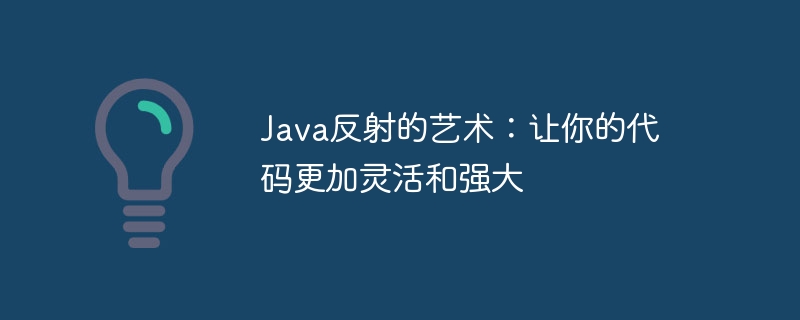

Java reflection is a powerful technology that allows developers to dynamically obtain class information, call methods and operate objects at runtime, providing a huge improvement in the flexibility and power of the code. PHP editor Xigua will take you to deeply explore the mysteries of Java reflection, unlock its potential, and make your code more flexible and powerful. By learning reflection, you will be able to achieve more flexible and intelligent code design, improving development efficiency and code quality.
The core of Java reflection is the classes and interfaces in the java.lang.reflect package. These classes and interfaces provide access to and modification of Java class structure and behavior. The basic concepts of reflection include:
Reflection has a wide range of applications in Java, including:
The following is some sample code using reflection:
// 动态加载类
Class<?> clazz = Class.forName("com.example.MyClass");
// 实例化类
Object object = clazz.newInstance();
// 调用方法
Method method = clazz.getMethod("myMethod", String.class);
method.invoke(object, "Hello world!");
// 获取字段
Field field = clazz.getField("myField");
field.set(object, "Hello world!");
// 修改字段
field.set(object, "Goodbye world!");Java reflection is a powerful programming technology that can significantly improve the flexibility, dynamics and scalability of programs. Reflection has a wide range of applications in Java, including dynamically loaded classes, dynamic proxies, serialization and introspection. Understanding and mastering reflection technology can help Javaprogrammers write more flexible and powerful code.
The above is the detailed content of The art of Java reflection: Make your code more flexible and powerful. For more information, please follow other related articles on the PHP Chinese website!
